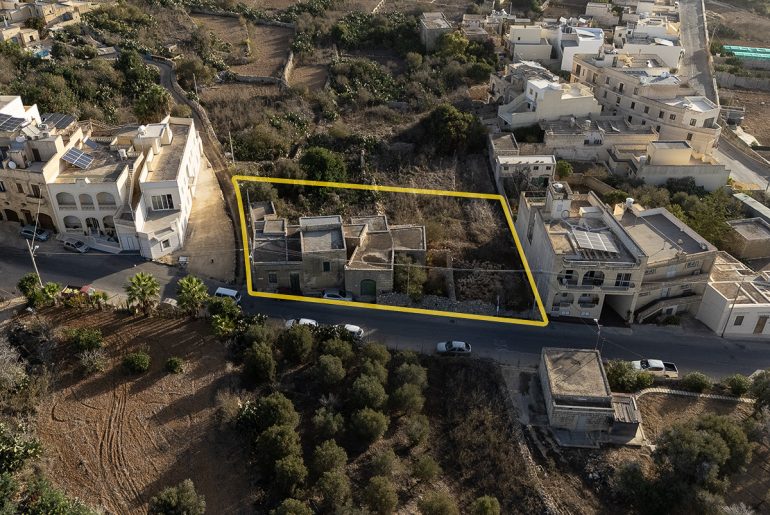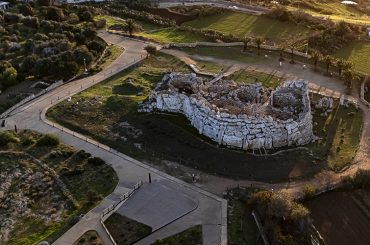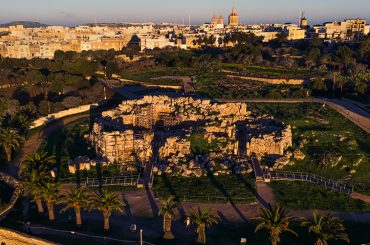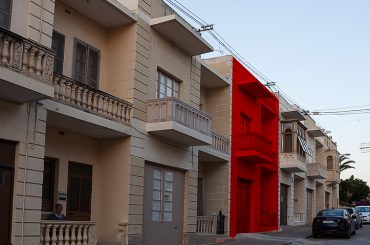Dread has set among activists as an application for a block of flats that elicited one of the largest number of objections ever recorded in Gozo is set to be decided by the Planning Board tomorrow.
The application was put in at the beginning of 2021, and the developer has tweaked the plans a few times to overcome wide opposition. The developer ended up reducing the number of flats from 27 to 22, but the bulk remains forbidding – if approved, it will be the largest building in the Ggantija Temples’ buffer zone, also known as the Area of Archeological Importance. It would also sit disproportionally or awkwardly on a stretch of street where the buildings on either side are townhouses.
The Superintendence of Cultural Heritage, supposedly the entity that actively protects our heritage, has lost much credibility over this application. At one point it called for the removal of the entire top floor and for splitting the building into two. In response, the developer removed just one penthouse and made another one a bit smaller, and the Superintendence then gave its blessing even though the developer had not removed the entire top floor and split the development into two blocks as it had requested.
The Superintendence also kept maintaining that the so-called World Heritage Technical Committee, which is chaired by Malta’s ambassador to UNESCO, Joe Vella Gauci, had given its assent.
Objectors, including myself, kept asking to see such consent in writing. Then, prior to the last hearing, the Superintendent Kurt Farrugia wrote to the applicant’s architect to say that UNESCO was insisting on a Heritage Impact Assessment.
In UNESCO’s Operation Guidelines, such assessment is supposed to be a prerequisite to developments in the buffer zone of World Heritage Sites.
That was at the beginning of last February, and the Planning Commission then suspended the hearing for six months to give time for the applicant to carry out an assessment. Ten months later no assessment has been carried, and this should mean that the application ought to be rejected at this stage.
But in a hearing two weeks ago, the Planning Authority’s Executive Chairperson, Oliver Magro, said that Heritage Impact Assessments can only be requested in Schedule 1 applications, and it is not clear where this fits in. In a larger way, that assertion signifies a direct dismissal of UNESCO’s Operational Guidelines for World Heritage Sites such as Ggantija Temples. The Operational Guidelines hold that Heritage Impact Assessments, either standalone or cumulative-impact assessments, have to be conducted before deciding on proposed development in the buffer zones of World Heritage Sites.
As such, what Magro said signals Malta’s indifference to its responsibilities under the United Nations’ World Heritage Convention – as a State Party to the Convention, Malta is expected to act in line with Operational Guidelines set by the World Heritage Committee. And such a course of action, unless changed, can only have one outcome: the removal of Ggantija Temples, and possibly all the Neolithic Temples, from the World Heritage list.
Ultimately, however, this case boils down to something so plain that it verges into the mundane. There is a wonderful vernacular house on site, full of delightful features and angular rooms that have grown organically over the years, like appendages, situated within view of Ggantija Temples. It also enhances what UNESCO calls the authenticity and integrity of the Neolithic temples, and there is a compelling reason to save it because it is in the buffer zone and doubly on its own merits. There have been similar houses elsewhere that have been saved. But instead of saving it, the Superintendence has consented to destruction. And if the proposal is approved tomorrow, then we can say that the entity that is tasked with guardianship of our cultural heritage has become complicit – together with Planning Authority – in allowing the pillage of our cultural heritage.
Our Heritage Needs You
It takes much effort and resources to produce the professional reportage of the Ggantija Streetscapes special reporting series. I rely on donations for income.





